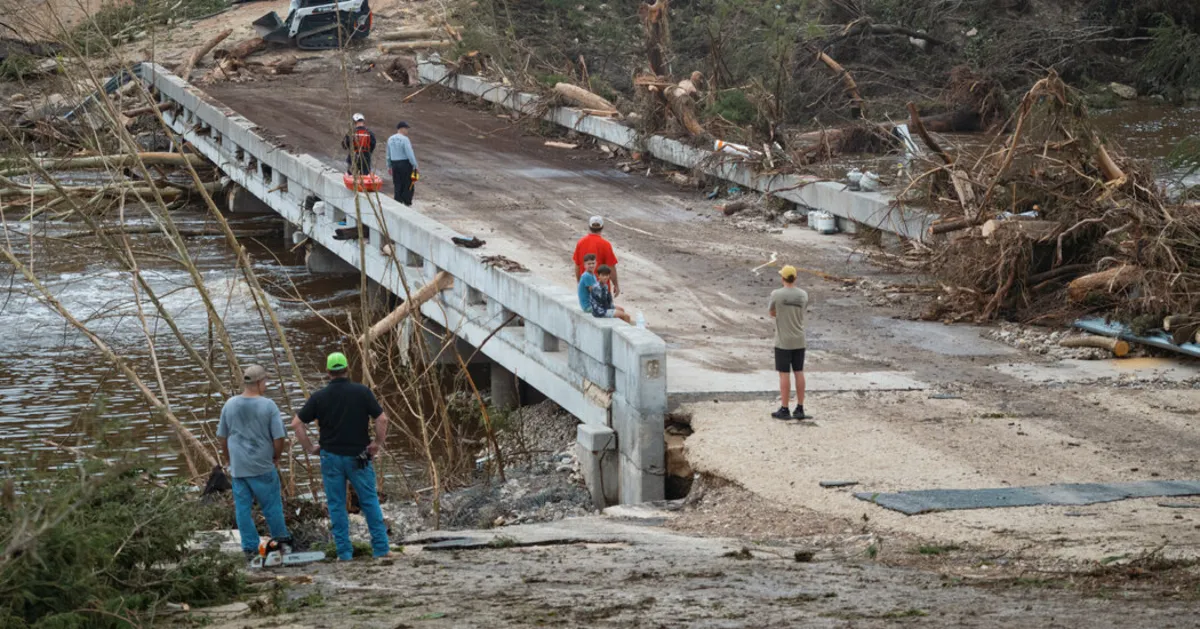
The recent catastrophic flooding in Kerr County has raised serious concerns about staffing shortages within emergency services and the impact on local communication efforts. Former officials emphasize that the loss of experienced personnel hindered effective communication with local authorities during the crucial hours following the issuance of flash flood warnings. As the death toll rises, these staffing deficiencies are likely to be a focal point of scrutiny.
Questions surrounding the preparedness of local communities, particularly Kerr County, have emerged, especially regarding its apparent lack of a local flood warning system. Kerr County, located approximately 50 miles northwest of San Antonio, experienced many of the recent deaths related to the flooding. In an interview, Rob Kelly, the Kerr County judge, explained that implementing such a system would incur significant costs, which local residents have been reluctant to support. “Taxpayers won’t pay for it,” Mr. Kelly stated, leaving the future of flood preparedness uncertain.
The National Weather Service's San Angelo office, responsible for monitoring some of the areas hardest hit by the flooding, was notably missing key personnel, including a senior hydrologist and a staff forecaster. Tom Fahy, legislative director for the National Weather Service Employees Organization, reported that the nearby San Antonio office also faced significant vacancies, such as a warning coordination meteorologist. These roles are critical for collaborating with local emergency managers to develop flood preparedness plans.
Flash floods can occur with little warning, making timely communication essential. The first flash flood warnings from the San Angelo and San Antonio offices were issued just after midnight on Thursday, urging residents to “move immediately to higher ground.” However, the effectiveness of these warnings depended on local officials' response, which remains unclear. A spokesperson for the Kerr County emergency management department did not provide immediate comments regarding their actions following the warnings.
The amount of rainfall that fell on Friday morning was unprecedented, with reports indicating rates of 15 inches in just a few hours. Dr. Louis W. Uccellini, former director of the National Weather Service, noted that accurately forecasting such extreme rainfall events has become increasingly difficult due to climate change. He emphasized the need for improved coordination between the Weather Service and local emergency managers to ensure effective responses to such warnings.
Under the Trump administration, the Weather Service has faced significant staffing reductions, with nearly 600 employees lost due to layoffs and retirements. This reduction has resulted in fewer meteorologists available to refine forecasts and coordinate with local officials. John Sokich, former director of congressional affairs for the Weather Service, highlighted that these unfilled positions diminish the agency's ability to operate effectively during crises.
The tragic events unfolded in the early hours of July 4, when over 10 inches of rain fell in parts of Kerr County, leading to the evacuation of more than 850 residents. As of the latest reports, 27 girls from a Christian summer camp remain missing. Nim Kidd, chief of the Texas Division of Emergency Management, pointed out that while forecasters had predicted significant rainfall, the actual amounts exceeded expectations, complicating emergency responses.
Among those affected by the flooding were families who lost loved ones. Julian Ryan, a 27-year-old dishwasher, tragically died while trying to save his family from rising waters in their trailer home. Similarly, the Harber sisters, Blair and Brooke, were swept away during their stay at a cabin along the Guadalupe River. Their heartbreaking stories highlight the human toll of inadequate flood preparedness and response systems.
The devastating flooding in Kerr County underscores the urgent need for improved flood preparedness and effective communication between local officials and the National Weather Service. As communities grapple with the aftermath of this tragedy, it becomes increasingly clear that investing in necessary warning systems and maintaining adequate staffing levels in emergency services are critical steps toward preventing future catastrophes.